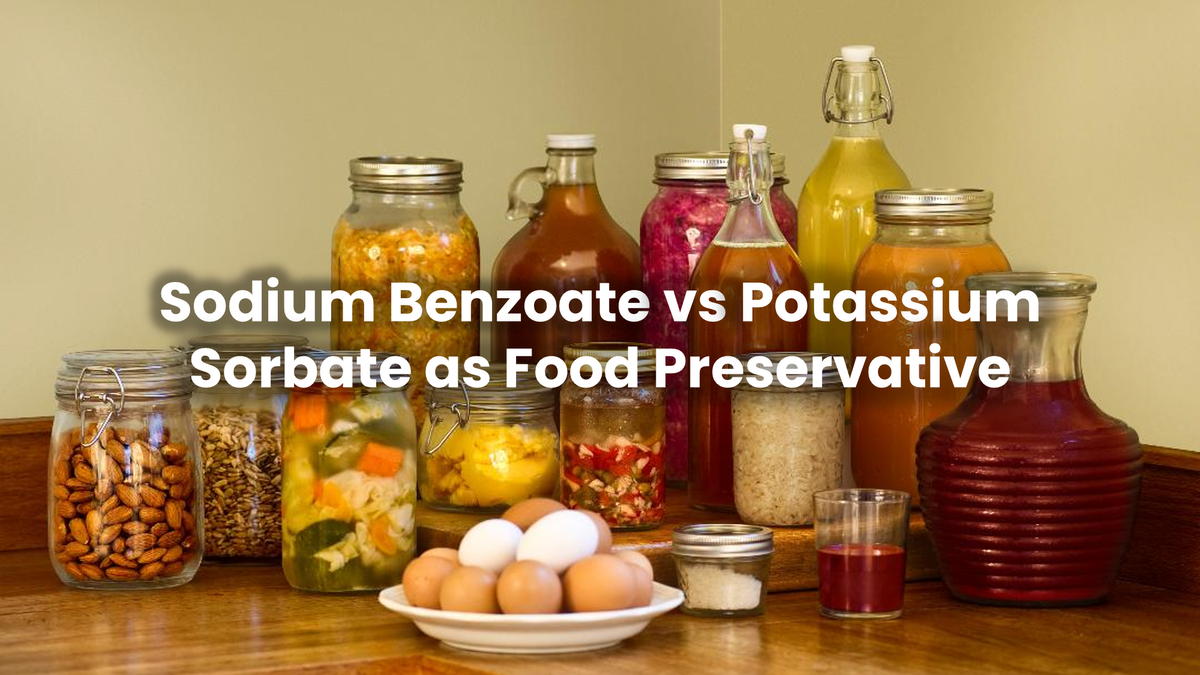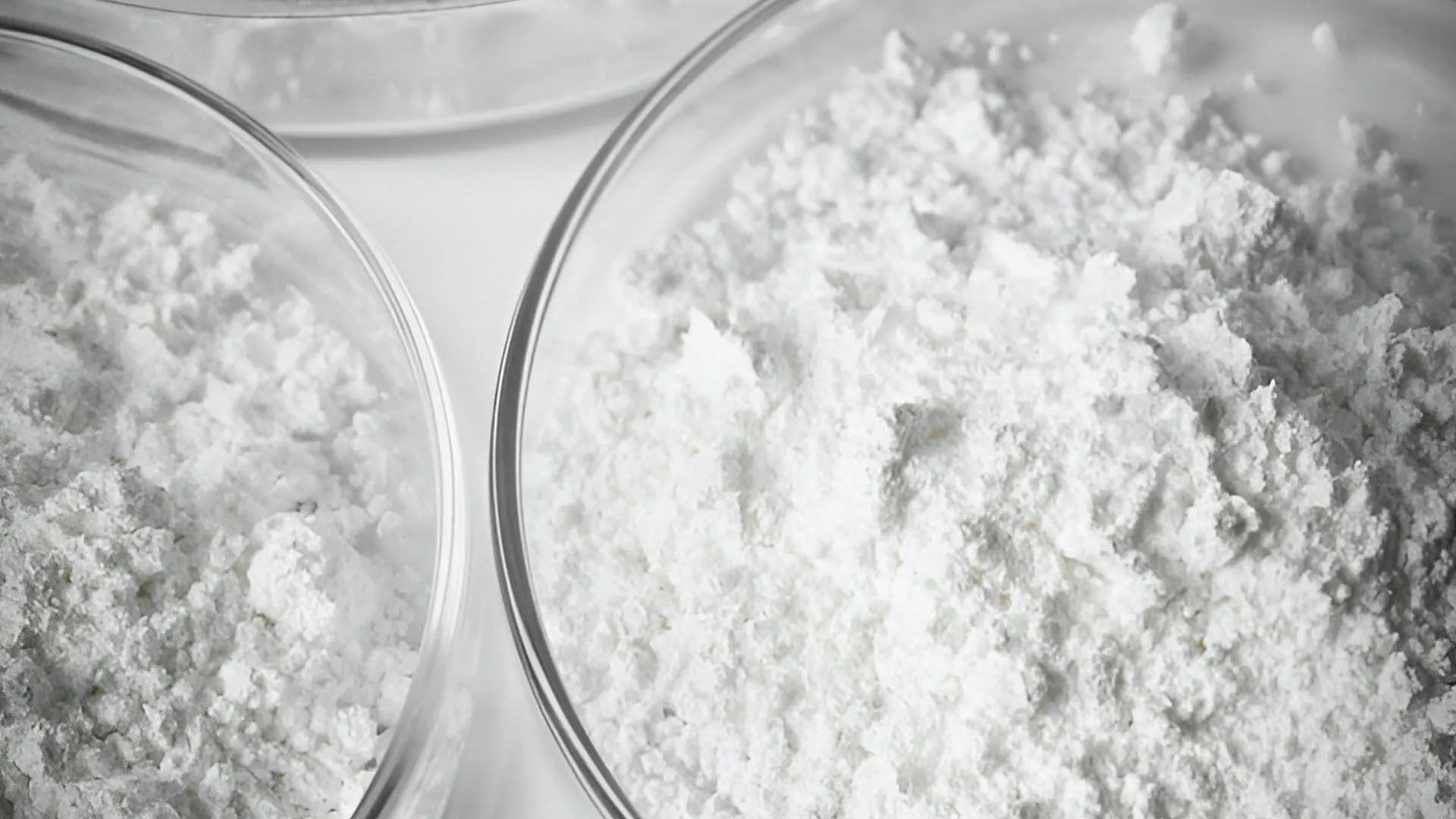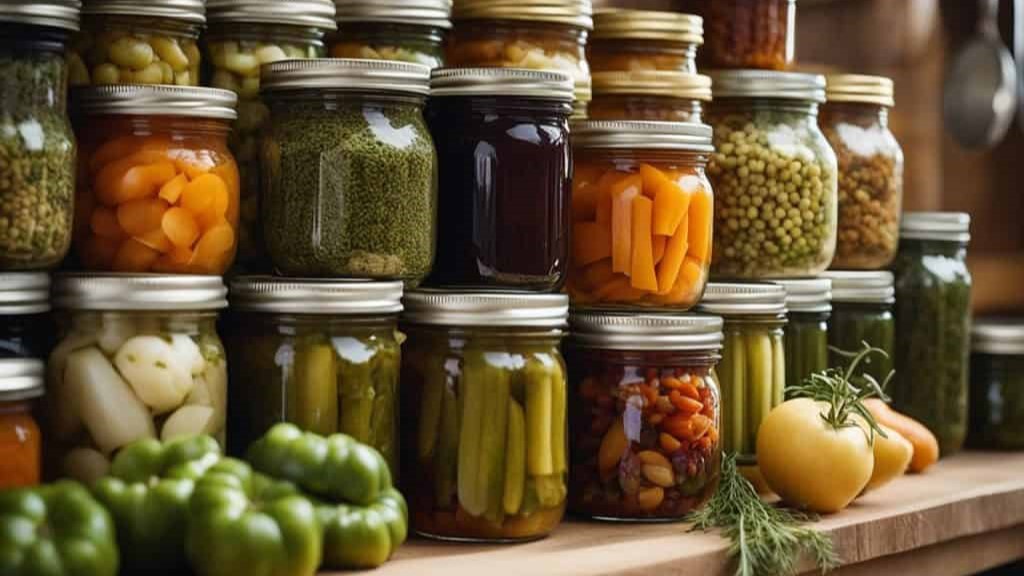
In the food industry, choosing the right preservative is not just a technical decision, it affects product safety, shelf life, regulatory approval, consumer acceptance, and cost efficiency. Two of the most widely used chemical preservatives in foods and beverages are sodium benzoate and potassium sorbate. Both are effective against spoilage-causing microorganisms, but they behave differently depending on formulation, pH level, and product type.
This article offers a side-by-side comparison of sodium benzoate and potassium sorbate, with the goal of helping manufacturers, formulators, and procurement teams make informed decisions.
What Are Chemical Preservatives in Food?
Preservatives are substances added to food or drinks to slow down microbial growth such as bacteria, yeast, and mold. Without preservatives, many products especially those with water content would spoil quickly due to microbial activity.
Why is preservation important?
- Ensures food safety
- Extends shelf life
- Reduces food waste
- Prevents changes in colour, taste, or texture
There are natural and synthetic preservatives. Sodium benzoate and potassium sorbate are both synthetic but approved as safe under various international food safety regulations (e.g., FDA, EFSA, Codex).
What Is Sodium Benzoate?

Sodium Benzoate is the sodium salt of benzoic acid. It is commonly used in acidic foods and drinks, such as soft drinks, pickles, fruit juices, and salad dressings.
- Chemical Formula: C₆H₅COONa
- Appearance: White crystalline powder or granules
- Solubility: High solubility in water
- Effective pH Range: Most effective at pH 2.5-4.5
Sodium benzoate works by inhibiting the growth of bacteria, yeast, and molds in acidic environments.
What Is Potassium Sorbate?
Potassium sorbate is the potassium salt of sorbic acid. It is widely used in foods, beverages, and even cosmetics. It is considered one of the safest and most versatile preservatives available.
- Chemical Formula: C₆H₇KO₂
- Appearance: White powder or granules
- Solubility: Moderate water solubility
- Effective pH Range: Effective at pH below 6.5, with best performance at pH 3-6
Potassium sorbate is especially effective against molds and yeasts, and to a lesser extent, bacteria.
Chemical Properties Comparison Table
Property | Sodium Benzoate | Potassium Sorbate |
Chemical Type | Sodium salt of benzoic acid | Potassium salt of sorbic acid |
Solubility in Water | High | Moderate |
Effective pH Range | 2.5 – 4.5 | 3.0 – 6.5 |
Primary Targets | Bacteria, yeast, mold | Mold and yeast (less effective on bacteria) |
Flavor Impact | May cause slight bitter or metallic taste | Very low taste impact |
Usage in Carbonated Drinks | Widely used | Rare, not stable in high-acid + carbon dioxide |
Regulatory Approval | Approved worldwide | Approved worldwide |
Heat Stability | Good | Moderate |
Cost | Generally cheaper | Slightly more expensive |
How Do These Preservatives Work?
Both sodium benzoate and potassium sorbate disrupt microbial cell functions, but through slightly different mechanisms:
- Sodium Benzoate: It interferes with the enzymes inside microbial cells, especially under acidic conditions. It prevents bacteria and yeast from metabolizing nutrients, thus stopping growth.
- Potassium Sorbate: It penetrates microbial cells and inhibits enzymes involved in reproduction. It is especially effective against mold and yeast but less effective on bacteria.
When to Use Sodium Benzoate?
Sodium Benzoate is ideal when:
- The product has a low pH (below 4.5)
- The product is carbonated (e.g., soft drinks)
- Bacterial growth is a major concern
- Cost is a key factor
Example Applications:
- Carbonated beverages
- Pickled products
- Sauces with vinegar
- Fruit juice concentrates
Tip: Combine with low pH to maximize efficiency. At pH above 5, Sodium Benzoate becomes much less effective.
When to Use Potassium Sorbate?
Potassium Sorbate is a better choice when:
- The product has moderate acidity (pH 3 to 6.5)
- The goal is to target yeast and mold, especially in baked or dairy products
- The product needs to avoid any metallic or off-taste
- Clean-label or “low chemical” image is desired
Example Applications:
- Cheese and dairy products
- Yogurt and sour cream
- Wine and fruit wines
- Jams and fruit-based sauces
- Salad dressings
Tip: It is more effective when used with mild acidifiers like citric acid to ensure optimal pH range.
Which Is More Effective as a Preservative?
This depends on the product type, pH, and microorganisms being targeted.
Condition | Most Effective Option | Why |
Acidic, carbonated beverages | Sodium Benzoate | Works better at low pH and with CO₂ |
Mold prevention in baked goods | Potassium Sorbate | More effective against mold and yeast |
Dairy products like cheese/yogurt | Potassium Sorbate | Compatible with moderate pH, less flavor impact |
Vinegar-based pickles or sauces | Sodium Benzoate | Acidic pH supports benzoate function |
Wine and fruit wines | Potassium Sorbate | Prevents fermentation by yeast |
Can They Be Used Together?
Yes. In some applications, a combination of Sodium Benzoate and Potassium Sorbate is used to broaden the antimicrobial spectrum.
Benefits of combining:
- Targets both bacteria and mold/ yeast
- Allows for lower dosages of each
- Can improve shelf life in complex formulations
Example: In sweet sauces or fruit-based syrups, both preservatives may be needed due to high sugar (supports yeast) and moisture (supports bacteria).
Dosage Guidelines
Preservative | Typical Usage Range |
Sodium Benzoate | 0.05% – 0.1% (w/w) |
Potassium Sorbate | 0.02% – 0.3% (w/w) |
Note: Always check local food regulations for maximum allowed limits.
Conclusion: Which One Should You Choose?

There is no one-size-fits-all answer. The most effective preservative depends on the product characteristics, especially pH and target organisms.
Choose Sodium Benzoate if:
- Your product is acidic and needs protection from bacteria
- You are working with carbonated or vinegar-based products
- Cost control is important
Choose Potassium Sorbate if:
- You are targeting mold and yeast
- Your product has moderate pH
- You need mild taste impact or are targeting natural/clean-label image
Consider using both in low dosages if your formulation contains both high sugar and mild acidity, or if you're unsure about microbial risks.




